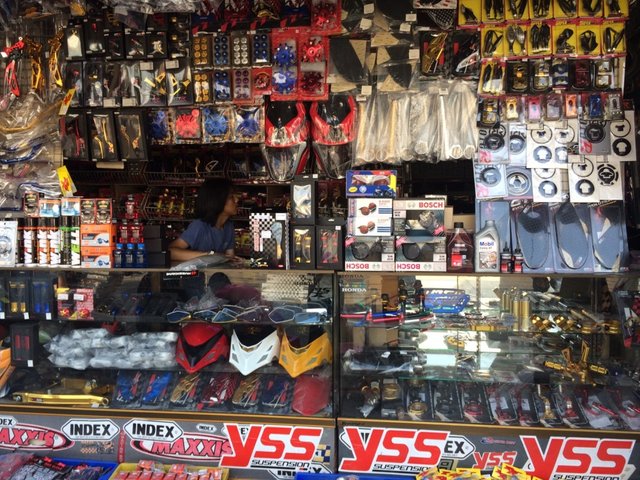Store the Best MX Parts NZ for Your High-Performance Bike
Store the Best MX Parts NZ for Your High-Performance Bike
Blog Article
Comprehending the Vital Parts of a Motorbike: A Comprehensive Guide for Lovers
For motorcycle enthusiasts looking to boost their riding experience and guarantee their bikes run efficiently, recognizing the necessary elements of a bike is extremely important. Each component, from the engine's intricate functions to the crucial function of the braking devices, not just affects performance but likewise security and convenience.
Engine Elements

The camshaft plays a critical role in controlling the timing of the engine's shutoffs, making certain the specific opening and closing required for efficient fuel and air consumption, along with exhaust expulsion. This timing is important to keeping ideal engine performance and efficiency. Furthermore, the carburetor or gas injection system, depending on the bike design, is in charge of blending air with fuel in the correct ratio for combustion.
The air conditioning system, either air or liquid-based, functions to preserve the engine's temperature within functional limitations, stopping getting too hot and guaranteeing longevity - motorcycle parts nz. Each component, diligently designed and incorporated, contributes to the smooth operation of the engine, specifying the motorcycle's power output and total performance
Transmission System
Essential to the motorbike's capability, the transmission system makes certain reliable power transfer from the engine to the wheels. This system consists of numerous essential parts, consisting of the clutch, transmission, and last drive, each playing an important function in equating the engine's power into movement. The clutch, normally operated by a hand bar, offers to involve and disengage the engine from the transmission, enabling for smooth gear adjustments and controlled velocity.
The transmission, usually described as the transmission proper, has a collection of equipments that motorcyclists can by hand change with to change the bike's speed and torque output. These gears are arranged in a series that enables the motorbike to increase efficiently and keep optimal engine performance throughout numerous speeds. A lot of motorbikes use a consecutive transmission, requiring the rider to shift gears in an established order.
Braking Devices
While understanding the transmission system is key to harnessing a motorcycle's power, just as essential is the capability to regulate and quit that power successfully, which is where braking mechanisms come into play. Brakes are vital for security and efficiency, providing the rider with the essential control to browse numerous surfaces and conditions. Normally, bikes include two sorts of braking systems: disc brakes and drum brakes.
Disc brakes are extra widespread in modern motorbikes due to their remarkable efficiency. They consist of a brake disc, caliper, and pads. When turned on, the caliper presses the brake pads versus the spinning disc, converting kinetic energy right into warm, thereby slowing the wheel. This system offers far better warm dissipation, constant efficiency, and improved stopping power, particularly in damp problems.
On the other hand, drum brakes, though much less usual, are still discovered in some motorcycles. They function by pressing brake footwear against the inner surface of a drum connected to the wheel. While typically less efficient in warmth dissipation and stopping power, drum brakes are easier and much more economical.
Understanding these braking systems' nuances allows riders to preserve their motorcycles appropriately and value the engineering that makes certain safe and reliable quiting.
Suspension and Steering
Suspension and guiding systems are essential parts that significantly affect a motorcycle's handling and experience comfort. The suspension system, containing forks at the front and shock absorbers at the rear, takes in road abnormalities, boosting security and control. Front forks, commonly telescopic or upside down, compress and rebound to reduce impacts, while back shock absorbers keep tire call with the roadway, important for grip and safety.
Steering, focused around the handlebars, attaches the biker to the Our site motorcycle's directional control. The guiding head bearings guarantee smooth procedure, allowing precise ability to move. Appropriate alignment and upkeep of these bearings are critical for predictable guiding response and decreasing biker fatigue.
The suspension's adjustability is one more critical facet; preload, damping, and rebound setups allow customization to match different riding designs and conditions. This adaptability is essential for optimizing performance, whether browsing city roads or taking on sturdy routes. Developments like digital shock absorber offer real-time modifications, boosting trip top quality throughout varied surfaces.

Electric Systems
After ensuring a smooth and controlled adventure through efficient suspension and guiding systems, interest turns to the electric systems, a pivotal facet of modern motorbikes. These systems play an essential role not only in starting the engine however also in powering different parts that improve the capability and safety and security of the motorbike.
At the heart of a motorcycle's electrical system is the battery, which shops electrical energy essential for beginning the engine and powering auxiliary systems - motorbike shop. The alternator or generator, coupled with the rectifier-regulator, ensures the battery remains billed while the motorcycle is in procedure, transforming mechanical energy into electrical power and keeping voltage degrees
The ignition system, an additional important element, is in charge of firing up the air-fuel blend in the engine's cyndrical tubes. Modern bikes often make use of an electronic ignition system, supplying greater effectiveness and integrity contrasted to standard systems.
Lights systems, including fronts lights, tail lights, and signs, are also crucial, making certain exposure and safety for the motorcyclist. Added digital parts such as sensing units, control devices, and shows add to advanced functions like gas shot administration, anti-lock stopping systems (ABDOMINAL MUSCLE), and electronic dashboards, better boosting the riding experience.
Verdict
A thorough comprehension of a motorcycle's crucial elements, consisting of the engine, transmission system, stopping systems, suspension, steering, and electrical systems, is vital for enthusiasts intending to optimize convenience, safety, and performance. Proficiency of these elements enables for informed choices relating to upkeep and upgrades, inevitably enhancing the riding experience. By incorporating this knowledge, bikers can ensure their bikes operate at peak performance and reliability, consequently taking full advantage of both satisfaction and long life of their automobiles.
For motorbike lovers looking to raise their riding experience and guarantee their bikes run smoothly, understanding the necessary elements of a motorbike is extremely important.Indispensable to the bike's capability, the transmission system makes sure reliable power transfer from the engine to the wheels.While comprehending the transmission system is More Help essential to taking advantage of a bike's power, similarly crucial is the ability to manage and stop that power successfully, which is where stopping systems come into play. Typically, motorbikes feature 2 kinds of braking systems: disc best waterproof riding jacket brakes and drum brakes.
An extensive understanding of a bike's important components, consisting of the engine, transmission system, braking systems, suspension, guiding, and electrical systems, is vital for enthusiasts aiming to maximize comfort, performance, and safety and security.
Report this page